Talking Trees: Science in the Forest
This week, we’re talking trees! From how they grow, to the oldest ones on Earth, to how they die, and what trees can do for our cities. Plus in the news, can you catch COVID twice? How microwaving an insecticide makes it 12 times more powerful, and the asteroid that might actually be an old Moon rocket...
In this episode
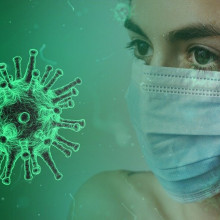
Catching COVID twice
Mark Pandori, Nevada State Public Health Lab
In many countries rates of the infection are surging again. Even in Germany, a nation with a strong track record of controlling the coronavirus, they’re currently seeing about 10,000 cases per day. Here in the UK the government has unveiled their tier system for managing outbreaks at local level, but cases are still rising, and some voices are calling for another national lockdown. The long term strategy, as far as we can tell, is to keep the disease activity as low possible until we have a vaccine, assuming that happens, to protect the most vulnerable. But a piece of news this week caused some to question that approach and ask, “will a vaccine work if you can catch COVID twice?”. What prompted that reaction was the publication in the Lancet medical journal this week of a proven case of coronavirus reinfection. Mark Pandori, Director of the Nevada State Public Health Lab, told Chris Smith about the patient they’ve been following...
Mark - What we have is a 25 year old man, positive for SARS-CoV-2 on two separate occasions, separated by about 48 days. And in the time between his two positive tests, he had two negative tests and also recovered. So it looks like he was infected twice.
Chris - Is it not possible the virus could have lurked in some part of his body and you failed to detect it in each of those two tests? And then it just made a resurgence or a comeback?
Mark - Yeah, it was a consideration we made as well because it's a very reasonable thought to have, that that might be what happened. And what we did was to look at the genomes of those viruses. And we found that the DNA of the two cases of viruses was very different. The difference was so great that it couldn't be explained by a slow creep of the virus changing over 48 days.
Chris - And in terms of his symptoms, how did he present clinically on the two occasions?
Mark - On the first occasion, he felt like he had the flu, but not lousy enough to be admitted to any sort of medical care. And then about 40 days later started to feel very lousy again, after having felt fully recovered. And felt so sick, he went to a doctor who immediately said, "boy, you need oxygen". And he was admitted to the hospital.
Chris - Did he recover?
Mark - Yes, he did recover. And is home.
Chris - What are the implications then, of what you found? Of someone who has caught the virus, recovered, presumably become immune, but then pretty promptly succumbed again.
Mark - This is not a surprise to people that study viruses. We have known that re-infections are possible in viral infections. And so what we don't know is whether this is a rare event or a common event, or somewhere in between. There are other coronaviruses that circulate around and we've had challenges with immunity to those as well. So the implications are that our own immunity might be weaker against this class of agent, but implications for vaccines might be different. Viruses have evolved to avoid natural immune systems. It's the one thing that can take them down. So natural immunity sometimes isn't as good as vaccine mediated immunity. So if we try to expand this to say, "well, gee, if you can get reinfected from natural infection, is a vaccine going to work?" And the answer is, I think there's still a lot of optimism about a vaccine because when vaccines are constructed, they're a focused, almost engineered immunity that we build. And we build it against the Achilles heels of these viruses. So the implications for our own immunity may not be great. But with regard to vaccine immunity, we could very well still be in fine shape.
Chris - Interesting though that your patient, when he presented for the second time, was worse.
Mark - There's two possibilities or three that I could share. We know that in viral infections, that that dose that makes you sick, the size of that dose can impact how sick you get. It's possible he got a very, very large dose the second time. Number two, there were genetic differences between the virus that he got in case A versus case B. And those fundamental differences might be representing different capabilities of those two viruses. The third thing is some viruses - you know, there's a virus out there that causes dengue where a first infection can facilitate a secondary infection. Now, we don't have evidence that coronaviruses utilise that strategy, but some viruses do where the actual unintended consequence of an immune response can facilitate a second infection. And we'll see if coronavirus can do that.
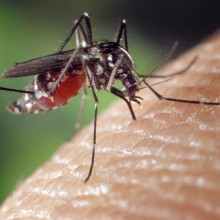
06:12 - Improving insecticides in a microwave
Improving insecticides in a microwave
Bart Kahr, New York University
Cases of malaria have spiked alarmingly owing to COVID restrictions hampering control efforts. The good news, though, is that scientists from New York University have found that they can weaponise a common insecticide and make it twelve times more powerful - just by cooking it in the kitchen microwave, as published in the journal PNAS. The compound, called deltamethrin, is a neurotoxin that sits on surfaces as tiny crystals, and gets inside malaria-carrying mosquitoes through their feet. Heating it up and then allowing it to cool, causes the molecules to rearrange themselves into a different crystal structure that turns out to be much more potent. Phil Sansom heard how from author Bart Kahr…
Bart - If we change the arrangement of molecules in deltamethrin, then the crystals act much more quickly by a factor of 12. That's a factor of speed.
Phil - It was 12 times quicker?
Bart - 12 times quicker when we changed the crystals to the new form.
Phil - Can you give me some context, please? Deltamethrin, is that the compound to use when getting rid of mosquitoes?
Bart - Yes. The leading insecticides that are used today for combating malaria-transmitting mosquitoes are in the so-called class of pyrethroids. These are synthetic compounds that are derived from a compound that's found in chrysanthemum flowers.
Phil - What do people do with it?
Bart - It's incorporated into insecticide-treated bed nets. And the other way that deltamethrin is used is by spraying microcrystals on the interior walls of homes. And that's where the interaction between crystals and the feet of mosquitoes is most consequential.
Phil - And is this something that's working just fine at the moment?
Bart - It's not working just fine at the moment. It's working particularly bad at the moment. And for two reasons, firstly, over the last decade or so, mosquitoes have been turning up, having developed a chemical resistance to deltamethrin. It's also failing right now because Covid interruptions have caused malaria deaths in this very unusual year to skyrocket, because malaria prevention is really a house to house operation.
Phil - It's interesting that you're telling me this. Because you're not an insect person, or a public health person, right? And so what was it that you did?
Bart - We study the chemical and physical properties of crystals made out of molecules. And we discovered a new arrangement or what we call them, polymorphs.
Phil - What does the polymorph look like?
Bart - The old form tended to crystallise as isolated patches with kind of random organisations. Whereas the new form kind of looks like a starburst when it's grown in a thin film. But those two arrangements have different intrinsic energies. And so they will liberate their molecules at different rates when a mosquito should step upon them.
Phil - And how do you get there?
Bart - It's remarkably simple. The way to get from form one to form two is simply to melt form one and then allow the melt to cool and then recrystallise.
Phil - You're kidding. So just by heating and cooling this stuff, you've discovered a new form that's 12 times as effective.
Bart - Exactly. Just by heating and cooling. You can put it on a hot plate. You can put it in a microwave oven. You know, it's like the same temperature as boiling water.
Phil - What's the potential here?
Bart - It could extend the useful life of deltamethrin in the face of chemical resistance. We might be able to introduce enough of the compound, even into resistant mosquitoes, that we overwhelm the rates of the chemical resistance mechanisms.

11:16 - Seeing inside cells with VR
Seeing inside cells with VR
Steven Lee, University of Cambridge
It sounds like something out of a sci-fi movie: to be able to shrink down and take a peek inside the cells in our body, and watch the molecular machinery at work, but now, with the help of some clever science, and virtual reality, the science fiction is becoming science fact. Adam Murphy heard more about it from Cambridge University chemist Steven Lee...
Steven - So we've been working on developing some software that allows us to visualise a very special kind of microscopy data. Our research is based on developing new optical methods to address biological problems. So simply put, we use lasers to build new kinds of microscopes. And the technique that we use is called super resolution imaging, which was awarded the Nobel prize back in 2014. And a few years ago, we were at a public engagement event at the Science Museum trying to tell people how excited we were about super resolution imaging. And we encountered a company called Lume VR who build kind of immersive experiences. And we started talking to them. They said, "this is fantastic science, but it looks ugly and it's difficult to interact with". And we said, "we completely agree. Please help us". And a few years later, we've managed to get to this point now. We've created this new software that allows us to explore some of our microscopy data in a virtual reality environment in a much more intuitive way.
Adam - So then I suppose the key question is, when you've got that headset on and you're in the programme, what does it actually look like? What do you see?
Steven - Yeah, it's magical actually! Super resolution imaging as I said, is this technology where images are built up over a tiny little point. So actually the environment is - if you can imagine - kind of dark, almost like a night sky and millions of points are kind of being illuminated like twinkling stars. So you kind of see this environment in the dark and it's kind of inspired us. The software's called vLume because if you've ever had a watch and you can see the glowing hands in the dark, it's exactly the same kind of idea. It's really a kind of interesting experience that allows you to explore your data.
Adam - And then what did the cells look like when you're in them? What do you see?
Steven - One of the issues you have with a lot of biological problems is that if you imagine just magnifying and magnifying and magnifying, looking through a microscope that perhaps people, you know, did at school or something, there's a fundamental kind of physical limit. And that limit is limited not by how well you build your microscope. It's limited by the physics of light itself. And so that scale unfortunately is a little bit larger than the vast majority of biological things that are occurring in our body. So up until this discovery, this new technology, and it was actually very difficult to be able to interact with things. Essentially you were trying to visualise things that were just too blurry. It's like if the glasses prescription wasn't high enough. And this virtual reality technology allows us to be able to not only see this data, but also interact with it to create new hypotheses and reject false ones.
Adam - How does it help you do that? How can just, how does this new perspective mean you can see new things and reject certain things?
Steven - Yeah, so first of all, it's quite powerful to do an example. We had a PhD student in my lab. We managed to purify an immune cell from her own blood. Then we imaged that cell and then she got the opportunity to kind of go inside her own immune cell in virtual reality. It's quite a powerful experience. But actually what we're kind of interested in looking at is these complicated, what we call membrane topology. So the shape that these immune cells form actually affects how they function, how you, how your body deals with new infections. And the ability to be able to see this and interact with it and be able to perform quantitative analyses on some of these data is actually allowing us to be able to understand these molecular origins of adaptive immunity and how your body physically deals with new infections.
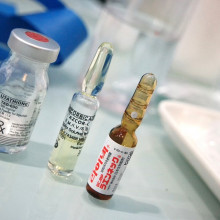
15:14 - TB vaccine could help treat COVID
TB vaccine could help treat COVID
John Campbell, University of Exeter
If you were born before the 1990s the chances are you got a routine BCG vaccination at school. This is used to protect against the bacteria that cause tuberculosis or TB. But recently scientists have spotted a pattern connecting countries with BCG vaccination programmes that repeatedly vaccinate people throughout life and lower rates of Covid-19, suggesting that BCG vaccines, especially in older people, might be protective against the complications of catching the new coronavirus. If that's true, while we wait for a covid vaccine, perhaps we could use the BCG to protect people instead? On the other hand, it could just be a spurious association, and that's what a large trial looking at healthcare workers across several countries is now setting out to discover. Chris Smith spoke with John Campbell, who is at the University of Exeter…
John: These papers that have come out over the last few months have been very important. There's now three of them, at least, that have looked at whether BCG is associated with COVID rates. And in fact, it does look as though there is an association with countries who have high BCG coverage tending to have lower problems with COVID. There is evidence that BCG may have important effects on the immune system acting as a sort of booster to the immune system generally.
Chris - It's not just the simple fact that if you have a country that's rich enough to have a vaccination program, and you compare that with a poor country that doesn't have a vaccination program, you're merely reflecting the richness of the country and its ability to cope with any kind of pressure, and it's not the BCG that's doing it per se?
John - Absolutely. And that's one of the confounding factors that have to be considered in these types of studies. And that's really the reason that the studies that are going to give a definitive answer are going to be based on individual large randomized trials. And that of course is what we are doing. We in the UK are part of a large international research effort led from Melbourne in Australia. And what we are doing is testing BCG compared to a dummy vaccination in 10,000 healthcare workers and following them up for a whole year. And what we're looking at is whether BCG might stop people getting COVID or if they do get COVID, whether it might result in reduced severity of the disease.
Chris - And you'd anticipate that the reason that older people appear to be more vulnerable when they catch COVID, at least one factor might be that any immunity they may have had to BCG administered previously has now worn off with age and therefore they become more susceptible?
John - Yeah. And that's an important observation because a number of countries still have repeat programs of vaccination using BCG. So there's at least 16 countries listed by the WHO, but many people will probably have waning immunity. So what we're doing can probably thought of as a sort of general booster to the immune system
Chris - Is your trial not then going for the wrong group of people because by looking at healthy fit hale and hearty healthcare workers, are we possibly missing a trick? Should you not be going in and hitting older people who are at higher risk because then the effect or impact if there is one would be easier to spot, it would be magnified?
John - There's a strong argument for giving it to older people that is certainly true, but healthcare workers are at the sharp end and we felt that, you know, where we can do something to protect healthcare systems and healthcare workers - that's an important group. And in the UK in particular, we are focusing not just on healthcare workers, but on care home staff who are a particularly vulnerable group of individuals. We think that targeting care home staff and community based healthcare workers is really good because it's very important the healthcare system is also supported.
Chris - It'll be ironic, won't it, if your results show that we've got something already in our medicine chest that we could use against this and we don't need to wait for a vaccine.
John - Yeah. This is the really exciting thing about this study because not only the sort of premise for this study is that the BCG vaccine gives these nonspecific effects, including important effects against viruses - a number of viruses, RSV the respiratory syncytial virus, the flu virus, and some, corona-type viruses, there's good evidence that we may be on to something here - it's been given to 4 billion people. It's safe and it's widely available. It would be fantastic if we found that it could buy us the time whilst the specific vaccines come through.
Chris - And in terms of scale, how much of a difference can BCG make to a person's COVID outcome?
John - The work that has recently been published from Greece within the last couple of months, the so called activate trial, identified that people - older people - who had been given BCG had a really quite remarkable reduction in upper respiratory viral type infections. In fact, it actually reduced by 79% compared to people who had been given a placebo. If we were even remotely near that, it would be absolutely fantastic.
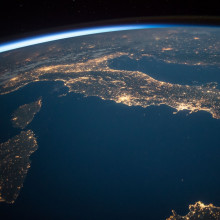
20:31 - Asteroid or space junk?
Asteroid or space junk?
Ben McAllister, University of Western Australia
Astronomers are always on the lookout for objects that might be heading our way. And when a new blip appeared on the radar recently, scientists assumed it was an asteroid and tracked it. But, now they’ve had a rethink. Could it, they’re wondering, instead be a legacy of our past forays into space from decades gone by? Ben McAllister has the details...
Ben - In September a telescope in Hawaii was diligently scanning the skies, looking for large space rocks on a collision course with Earth, which could pose a threat to human life. What it found, among other things, was a tiny asteroid on a course to make a close approach. The object, labelled Asteroid 2020SO, is expected to enter our orbit in October and stay for about 7 months, orbiting much like our own Moon.
The capture of a small new moon, what we call a “mini moon”, is pretty fascinating in and of itself - but 2020SO has some strange characteristics which have caused astronomers to come to unexpected conclusions. Experts now believe that 2020SO might not be a space rock after all, but rather a long lost piece of man-made junk, returning to Earth after nearly 60 years in the void.
Specifically, researchers at NASA think that the object could be a part of a rocket used to propel the Surveyor 2 lander to the Moon back in 1966. After helping the lander get to its destination the rockets were shot off into space, never to be seen again - perhaps until now!
There are a few aspects of 2020SO’s trajectory which make it look a little bit artificial.
Firstly, the object is travelling pretty slowly for an asteroid - plodding along at a poky 2400 km/h - making it look much more like something we primitive humans would have been capable of flinging into space 60 years ago.
Secondly, our new solar neighbour is on a nearly circular orbit around the Sun, which is pretty similar to the Earth, and pretty atypical for an asteroid.
Finally, the plane in which the mysterious mini moon orbits the Sun is aligned with the Earth’s. That is to say, if you picture the orbits of the Earth and 2020SO around the Sun as two rings floating in space, the rings aren’t tilted at any angle to each other - they are aligned.
This is very odd for a space rock, which we are used to seeing travelling at all kinds of angles - but it would be totally consistent with something we shot out towards the Moon ourselves.
Whatever our strange new friend is, we’ll be able to get clearer answers as it gets closer to Earth. We might be able to discern a rough shape, figure out whether or not it is painted, and observe the way it interacts with the heat and light from the sun to see if it looks more like something light and hollow, like an old piece of space junk, or something dense like a rock.
If it does turn out to be a long-forgotten rocket part we could potentially learn quite a lot from it about the way man-made objects hold up in the harsh conditions of space over decades long timescales. And if it turns out to be a real asteroid, it would be fascinating as well, due to the peculiarities of its orbital trajectory when compared with things we’ve seen before.
Either way - it’ll only be with us for the next 7 months, so make sure to wave as it passes by.
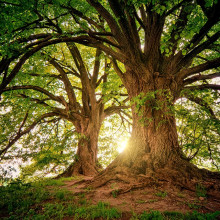
What makes a tree a tree?
Ángela Cano, Cambridge Botanic Gardens
It was once a much bigger number, but these days about 31% of the Earth’s surface is covered by forests, and they’re home to about 3 trillion trees. Trees store carbon; they give out oxygen; and they’re also nice to look at, meaning they enrich the environment in many ways. Adam Murphy spoke to Ángela Cano from the Botanic Gardens in Cambridge about what makes a tree...
Adam - I love trees. I might be a city boy, but put me in a forest, and I'm quite happy to have a good time wandering around, looking up to the canopy. There's nothing quite like being surrounded by trees to make you feel good, but I'm not. There's a pandemic on and I'm stuck inside. So to make myself feel better, I asked Ángela Cano from the Botanic gardens at Cambridge - what is it that makes a tree, a tree?
Ángela - A woody plant that usually has a main trunk, right? This is opposed to, for example, a herbaceous plant that doesn't have wood in its tissues
Adam - That seems pretty straight forward. So how do trees grow differently to make them a tree and not just some weird big vine?
Ángela - Well, all plants grow through a process that is called photosynthesis, where they actually capture the light of the sun and the CO2 from the environment. And through the roots, they also take water from the ground. And with these three elements, they transform them into sugar and oxygen. And the difference between a herbaceous plant and the tree is that the tree can stock that sugar in the trunk and sugars are basically made of carbon. And that's why we think that trees are really good at stocking carbon because their stems basically are made of carbon in a solid state.
Adam - And what is that's going on in those cells to make them so strong?
Ángela - The cells in the stem of a tree, they are, most of them, dead. We call that lignified. So the cells of all plants, they have this wall inside. That's what gives the plant the structure. But then these cells in particular, their walls are full of lignin, which is a compound that is made of carbon and gives the really hard structure of the wood. So if you compare a herbaceous plant that can't really grow tall because they don't have that structure; the tree, because it is able to transform that sugar into really hard lignin it can provide some structure and grow really tall. Because trees, eventually what they are looking for is to reach the light. It's an adaptation to compete against other plants for the light, right.
Adam - How long can trees stick around for, is it a flash in the pan or they're here forever?
Ángela - There are all sorts of ranges here. Because you have what we call pioneer trees that grow very quickly, but then they also die quite fast. And so these are trees that, for example, if you think of a forest and a tree has fallen and then suddenly there is a lot of light in the ground of the forest, you have seeds that are waiting for light to germinate. And so the first seeds that germinate are those that are called pioneers and they can germinate and grow very quickly, but they will die also quite quickly because their wood is not really good quality, right? But then you have these other trees that can grow under less light, that can stand shaded conditions, but they grow slower and these can be really, really old. So there are trees that are thousands of years old. So there is a whole range. The one of the oldest trees that we know about, it's actually a population of trees. The species is called populus tremuloides, and it's found in Utah in the United States, this is what we call in English 'quaking Aspen'.
Adam - There Ángela's talking about Pando, a group of quaking Aspen that is by some measure, the heaviest organism in the world.
Ángela - So these trees can actually form colonies. A single individual has multiple stems that all individually look like a tree, but it's actually, if you look at the roots, they are all connected. It's only one individual that makes clones. And this specific community, if you want, is thought to be 14,000 years old.
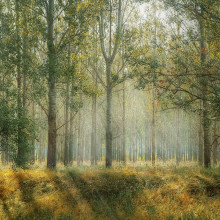
Trees that live fast, die young
Roel Brienen, University of Leeds
The old saying “live fast, die young” isn’t just for rock stars and playboys - it also applies to trees. And climate change appears to be speeding up the rates at which trees grow and therefore potentially hastening their deaths, meaning some of the assumptions we make about the role of forests in mitigating against climate change might be wrong. Chris Smith spoke Roel Brienen, from the University of Leeds, about the lifespans of trees...
Roel - Tree ring records really tell us how old trees can become, simply by counting rings. From tree rings we can also calculate how fast they are growing; and we can do that simply by measuring the ring width, because the ring width of a tree reflects how fast the tree grows in diameter. And what we did in our study was we related the growth of trees, derived from tree rings, to the ages of the tree, to the tree's maximum lifespan; and by doing this what we found is that the slowest trees in a population are the ones that live the longest. This shows that this 'live fast, die young' principle really applies also to trees. And we did this using tree ring databases - that we scored from the internet, online - of more 210,000 trees of 80 different species; and in most species, we find that the fastest trees are the ones that live the shortest, and the slow ones are the ones that live long.
Chris - And this is comprehensive, you think, therefore, across the world and also across times, would you say? Because if we think that the climate is changing, would that effect be intrinsic to the data that you've looked at on your trees?
Roel - It would be, we think. Because what we did is we looked really globally. We included trees from the tropics, from temperate regions, from the Arctic regions; and we included trees that grow fast or slow for all kinds of different reasons. And we therefore think that because this occurs in all these different tree species growing in different biomes - and some in an open forest, others in closed forest - we think that this phenomenon, this 'live fast, die young' phenomenon, occurs universally across all species.
Chris - And the key question then Roel: if I take a slower growing species and I make it grow faster, does that mean then that it does actually die sooner, even though it's a slower growing species traditionally?
Roel - Yes, yes. What we really find is that within a species... previously Ángela was talking about having pioneers and having other species that are built to live much longer. But what we did is we looked within species. So we find that even within species... if we have an oak, for example, an oak that grows very, very slowly, that oak will eventually live much longer than an oak that grows very fast. So even within species we find exactly the same phenomenon.
Chris - And is it just the tree growing fast that undermines its longevity, or is it that some other factor that makes the tree grow fast also makes the tree die young?
Roel - Well this is an interesting question, and we have tried to look at this; and we cannot pinpoint exactly what the mechanism is, why these fast growing trees live shorter. But there are various hypotheses. One could be that they simply make wood that is of lower quality, or that they are less resistant to survive droughts, for example. And that could be one reason. Another possible cause - and this is a much simpler mechanism - is that trees simply die once they reach a certain maximum diameter, a maximum size.
Chris - Is it also possible it's something as simple as: if you've got warmer climates that favour tree growth, but warmer weather also encourages more tropical storms, you're going to have more winds that are going to knock your tree flat even though it's growing beautifully?
Roel - That could be a possibility, but we find it really across all climates and all climate zones; and in areas where the major tree death is storms, but also in areas where the major causes of tree deaths are different, insect attacks for example, or droughts. So because we find it occurring across such a wide variety of habitats and different forest types, we believe it's not driven by one simple factor.
Chris - Given that we have used the amount of carbon dioxide that trees use to grow in predicting how climate change is likely to play out into the future, does the fact you found this really make that much harder to predict then, or does that throw some flies into the ointment?
Roel - This does have some consequences for our predictions of CO2 in the future, I believe. One important thing to realise and understand is that in the past - because trees have been growing faster due to increases in atmospheric CO2, due to increases in temperature - forests and vegetation globally has been taking up roughly one third of our CO2 emissions over the past two or three decades. And many climate models predict that this continuation of CO2 and the further warming into the future.... that as a result of that, we will still see an increase in carbon uptake by forests globally. That is what we call a carbon sink. However, if trees that grow faster also die younger, that will mean that a forest in the future may not be able to provide such a service as they have been doing in the past.
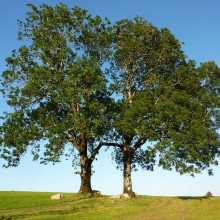
36:15 - The pandemic facing UK ash trees
The pandemic facing UK ash trees
Luke Barley, National Trust
The world is currently in the thrall of the COVID pandemic, which has claimed over a million lives so far. But trees aren’t immune to disease outbreaks either, and ash trees are facing their own pandemic. Ash dieback is a lethal fungal disease known as Hymenoscyphus fraxineus that originated in Asia. It first appeared in Europe 30 years ago. UK trees are highly susceptible and this year has been a particularly severe one. Luke Barley, from the National Trust, spoke to Adam Murphy about the disease...
Luke - It's a fungal tree disease. The spores are windborne, they're microscopic and they can travel many miles on the wind. They land on the leaves, and then the fungus establishes itself and grows down through the tree’s cells that we heard about earlier, particularly the hollow tubes at the outer edge of the tree that transport water and nutrients around the tree; and the body of the fungus blocks those cells essentially and kills the tree. In young trees it can kill it really quickly; in older trees it's more progressive, and it kills them slowly but surely from the outside in. The reason our ash are so susceptible is that they haven't co-evolved to deal with the fungus. It's from Asia and it's co-evolved with ash species in Asia; so over there it's more like a leaf blotch, it just discolours the leaves, it's quite a minor ailment because the trees are accustomed to it. But over here, our trees aren't accustomed to it at all, they have no defences against it, no resistance to it. And so it's likely to kill up to 95% of our European ash in Britain.
Adam - How does it spread, and how easily does it flit from one tree to the other?
Luke - It's highly infectious because those spores are windborne. It's been in England since... well, we've known about it since 2012; it was probably here before that. It certainly arrived that year on infected nursery trees from Europe, but it may have arrived on the wind prior to that. And then since then it's been making its way progressively across the UK, and it's now present... certainly here in the National Trust we manage land in England, Wales, and Northern Ireland, and everywhere we look after, ash dieback is now present.
Adam - And what about this year made it so bad? And just how bad was it?
Luke - It's been very bad. We've known it was coming obviously since 2012, so it wasn't a huge surprise in some respects; but like every other infectious disease there's a bell shaped curve to the shape of the infection, and a couple of our landscapes - mainly the chalk and limestone landscapes - the ash in those landscapes seem to be more susceptible. We're already into the exponential phase, but lots of other places weren't, and we seem to have hit the exponential phase everywhere this year. And then that's also been exacerbated by the fact that we had a very, very dry spring, and a very late, very heavy frost; both those things really stress trees out, and that lowers their ability to resist pathogens. So we've seen it really kick off this year absolutely everywhere that we look after. It's been very severe.
Adam - What kind of numbers are we talking about? How many trees?
Luke - On National Trust land it's very hard to quantify, because we don't have a really accurate census of our tree population anywhere. But we know that we're going to need to fell around 40,000 trees this year on National Trust land, just where they could affect public safety if they die - this is by roads or by buildings where people congregate - because as the ash trees die, they become unstable and compose a risk to people. But we think we've got anywhere up to two and a half million ash trees on National Trust land that we won't have to fell; they're just going to die of ash dieback. And it's hard to estimate how many of them are very severely affected this year, but it's quite a high proportion I'm afraid.
Adam - Let's say the worst happens and we lose all those trees; what kind of an impact is that going to have for British wildlife and ecology?
Luke - It's going to have a really big impact. It's going to be very, very sad, frankly. I suppose there's a couple of separate things to tease apart: there's ash in woodlands, and there are some places where it won't have such a catastrophic impact. If ash forms a relatively low proportion of a mixed wood with other species present, then the increased light in that wood as the ash die might actually benefit some species. So that's a thread of hope to hang onto. But where we've got ash dominating entire woodlands we often get a really special ground flora: lots of interesting wildflowers in ash woodlands, because it casts a particularly light shade and its leaves are cycled into the nutrient cycle much more rapidly, so the conditions for wildflowers are great; and that's going to change hugely as whole ash woods die, potentially. So that's going to be really sad. And then the other really sad thing is open grown trees, trees outside woods, places like the Lake District where we've got very significant ash pollards. Pollards are trees that have been caught continually through human history, for firewood and for fodder and for other uses. They're very culturally significant, but they're also home to lots of rare invertebrates that live in the decaying wood in their centre and lichens on their bark. And so we're going to lose all the special species related to open grown ash trees as well. That's before we even get onto ecosystem services. We think that the ash trees on National Trust land might be sequestering anything up to about 700,000 tons of CO2 equivalent; and they provide all kinds of other benefits obviously, whether it's shading or flood alleviation, all those great things that trees do. So the impact is going to be very, very significant.
Adam - What can we do about it? It seems like a massive problem that we should be on top of.
Luke - It's a massive problem. There are subtle things we can do to mitigate some of those impacts for nature in ash woods, by planting other appropriate species, or outside woods by making sure we plant lots of trees. And that really is the long and short of it. In terms of the climate crisis, the crisis in biodiversity, we really, really, really need to establish a lot more trees. And we also need to establish a lot more species, and really make a huge increase in tree cover and make it more resilient to future threats.
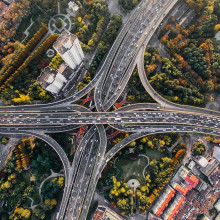
42:56 - The potential of the urban forest
The potential of the urban forest
Mat Disney, University College London
In the city, trees can be very valuable, but it’s often underestimated how valuable. Chris Smith spoke with Mat Disney. He's from University College London where he has an interest in Urban Forests and he’s urging people to plan new developments more carefully with trees in mind…
Mat - Well, that's a, that's a good question. And, you know, depending on who you ask, there's several hundred definitions of what a forest is, nevermind an urban forest. So, you know, what's an urban forest, it's a forest that's got people in it basically, but more technically, if we look at the UN's food and agricultural office definition, which is one of the ones that many people use, it's a chunk of land with a tree canopy cover of more than about 10%, and an area of more than about half a hectare. So it's about, half a football field size. And, it has to have trees that can reach a minimum height of five metres. So you can see straight away that that's not a very big ask, you know, half a football field, 10% tree cover, five meters. That's not much of a forest in many cases, but the critical thing in their definition that is, it exists in the absence of other land uses. And of course that's the difference in cities. The land use is what we put it to.
Chris - And apart from looking nice and providing a place for park benches, where you can sit under normal circumstances and have pigeons poo on you, while you're having your packed lunch, what actually do they return to the city? Why is a tree so important? What's the sort of, raison d'être behind you being on this mission?
Mat - Well, trees, you know, as we've heard from the sort of earlier reports here, that they provide all sorts of different services, not least the kind of aesthetic benefits that we appreciate so highly. Everybody loves trees, but they act to absorb carbon. That's one aspect, but in cities, particularly they do things like keeping the temperature down, particularly when temperatures are reaching extreme levels in the summer. And as we are, you know, climate models and forecasts are predicting that we're going to see spikes in temperature, and longer, more protracted heat events in cities. Trees keep that temperature down through transpiring water, and through shading. They also act to mitigate stormwater runoff, as well as providing a wider ecosystem for biodiversity in cities, birds, pollinators, insects that keep the other aspects of the green city alive.
Chris - Some parts of some well-established cities do have lots of big green open spaces. New York has Central Park. London has a number of different parklands. I mentioned when I was introducing you, that you've been trying to encourage people to think about this at the planning stage, I guess where you're coming from is that to plant a decent tree, isn't something you just do. And it's done like building a building. It's something you've got to think about, what will be there in 30 or 40 years, which is the time it will take to establish.
Mat - Absolutely. And in fact, more than that, the values that we get from a large mature tree that's 50 plus years old, far outweigh the value that we get in essentially reaching that point. So the problem is if you lose a large mature tree, you can play the numbers game and replace it with 20 smaller trees. And you can even get an equivalent tree canopy cover, but the overall value of those smaller trees, even though the canopy cover may be the same is much less than the large mature trees that take a long time. So we have to think, well in advance of how we plan cities, to build this urban green infrastructure as we go, and, you know, the current way we do it is rather piecemeal. And if we don't put the right value on trees, what they're really worth to us, then it is easy to overlook them because ultimately everything has a bottom line.
Chris - It sounds like common sense though, doesn't it? Plant some trees now, think about the future. We're very good at being wise, in retrospect, as a human race though aren't we? Are there actually any decent rules that have some teeth in place that make sure that the sorts of common sense things that you're saying, which actually translate longterm into a really much better environment for everybody, and nature, actually gets put into play. Because there's a huge tension and pressure on developers, isn't there? They see a patch of land and they see pound signs there. We could put 15 office blocks on there and make loads of money instead of planting some tree.
Mat - Absolutely. But you know, we know those things are also somewhat temporal as well. People might be looking at office space at the moment and thinking that's perhaps not such a safe investment. What we do know is that if the value of trees is anywhere near what we think it is, then building that in to how we plan our cities, given that we're more and more of us are living in cities, 60% of the world's population by 2030, that's going to be critical to making cities livable. And of course we've seen how important that is. I think many people in Britain particularly, would look at trees and parks very differently in the last six months, then they perhaps have done before. And I think that's something we need to really emphasise, and that we can't make decisions in hindsight, as far as green infrastructure and trees are concerned, because they are long lived things. We need to think about them now. And we need to think about them for the long term.
Chris - Are you gathering actual objective evidence on this, or are you mainly sort of, gathering qualitative, people's reactions to what they think about trees, or are you actually out there, boots on the ground, making measurements of cities and what's going on in this space?
Mat - Yes. I mean, my perspective on this is I come at it from a kind of physical science point of view. So we're trying to use new observations from satellites, and aircraft, and even drones, and cameras on the ground, and new three-dimensional measurements, to make these kinds of quantitative estimates of what trees do. But at the same time, not overlooking those less quantitative, more qualitative aspects, because of course in the end, that's what many of us do value, even though we know that yes, trees are good for us, but how good they are, we might not put the right value on, as I say. So making those kinds of measurements across a range of scales, right from the ground up, through to using these kinds of new, high resolution, satellite data is giving this bigger picture look of things.

49:26 - QotW: Is hard water better for you?
QotW: Is hard water better for you?
Adam Murphy was pouring over the science to find an answer, so he reached out to University of Cambridge chemist Ljiljana Fruk...
Jo - We drink gallons of the stuff in a lifetime, but which is better for us, hard or soft. My skin and hair prefer it soft. But what about teeth and bones, and which do our kidneys prefer?
Adam - If you've ever struggled to make water soapy, or had to put in the elbow grease to scrub your shower head free of limescale, then you're intimately familiar with hard water. It's likely to happen if your water passes through limestone or chalk or gypsum before it reaches your taps. But what exactly is the difference? Well, thankfully, University of Cambridge chemist, Ljiljana Fruk's favorite chemical is water. So she's happy to fill us in.
Ljiljana - So hard water is the water that has a higher content of minerals, mainly calcium and magnesium compounds.
Adam - That seems like a pretty small change. So what effect can it have on our health?
Ljiljana - Health wise, there haven't been any serious problems associated with drinking soft or hard water. Interestingly, for example, despite a common belief that hard water might cause kidney stones, this has never been correlated.
Adam - I don't know about you, but I think no kidney stones is always a plus. Now, Jo's hair and skin don't seem to like hard water though. Why might that be?
Ljiljana - Hard water, on the other hand, because of the high mineral content, might contribute to dry scalp and skin, but only if people already have this kind of condition, because it impacts the pH balance of the skin. It might also weaken the natural barrier to pathogens
Adam - Hard water has calcium. And our bones and teeth need calcium. Could there be a benefit to drinking hard water?
Ljiljana - Some studies have indeed shown that women that lived in the areas where they predominantly drink hard water, they also have higher bone density at a later age. You know, those correlations are not very clear and there is no clear difference between drinking hard versus soft water. And there is no harmful effect of one or another.
Adam - And maybe it's just because I grew up with it, but I happen to think hard water tastes better. Thanks Ljiljana for answering that one. And next week, we're going batty trying to answer this question from Satish.
Satish - How does a bat sleep the whole day by hanging on a tree? Will being upside down, not affect the blood circulation?










Comments
Add a comment